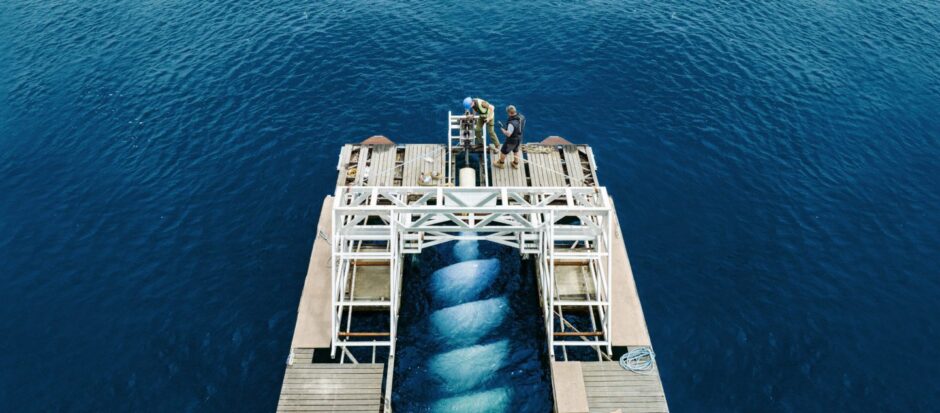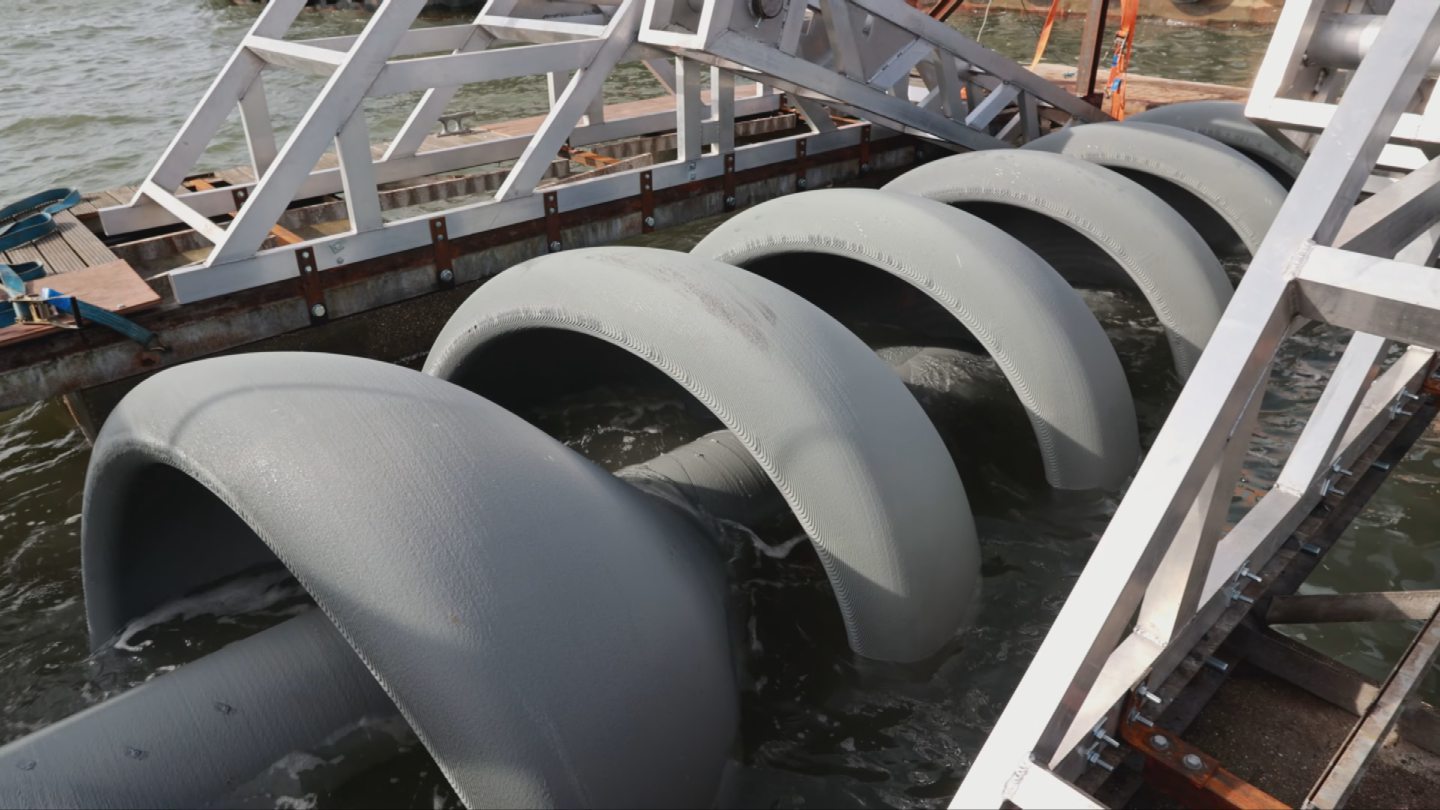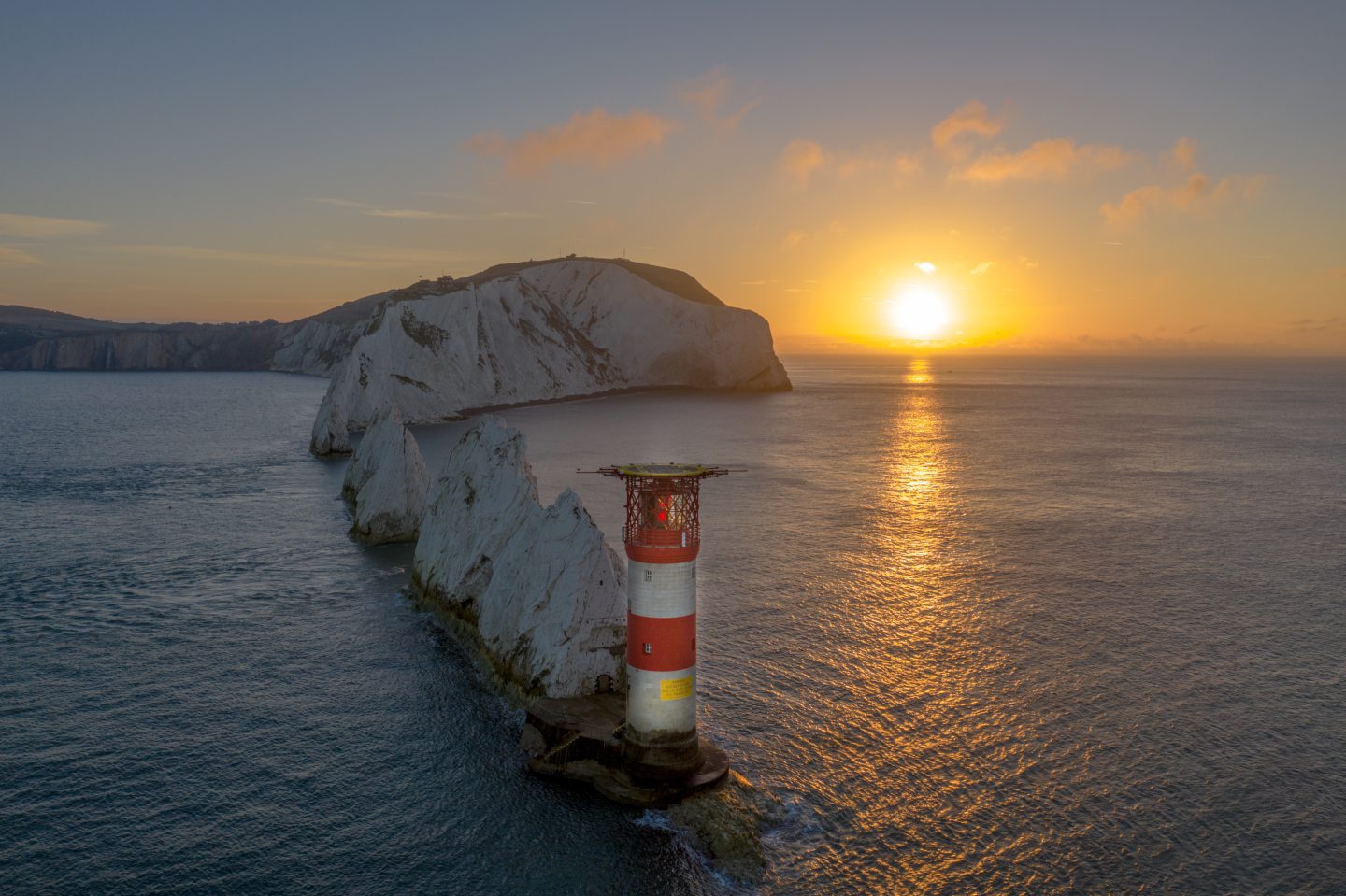
Off the coast of Alderney later this year, Spiralis Energy chief executive Guy Levene hopes to see the start of a revolution in UK tidal energy. Quite a few revolutions, in fact.
Founder Nick Davis launched Spiralis last year, with the company developing a tidal turbine design attached to a floating offshore platform, which it calls the ‘axial skelter’.
After months of refinement, Spiralis is aiming to launch its first demonstration unit in the English Channel for 12 months of gruelling testing off the coast of Alderney.
If the trial goes according to plan, Spiralis has its sights set on scaling up to deliver utility-scale arrays anywhere in the world with the right tidal or river conditions.
Spiralis Energy’s nature-inspired design
Speaking to Energy Voice, Levene says the design of the patent-pending axial skelter is based on the spiral-shaped Turritella seashell and the Archimedes screw principle.
Screw turbines are also not new to the UK, with river flow hydropower projects operating across Great Britain from Aberdeen to Windsor Castle.
But while the basic concept behind the Spiralis technology has been around for thousands of years the manufacturing techniques are much more modern.
Spiralis uses 3D printing technology to produce its skelters, alongside using fully recyclable materials.
Levene says this significantly reduces costs and gives Spiralis the ability to scale its units for a vast range of different project types.
The company’s technology, and the potential of tidal power generation, has already attracted an £800,000 investment from North Sea operator Kistos.
Levene says a primary focus for Spiralis in developing its technology is simplicity and affordability.
Within two to three years, Levene says Spiralis expects to achieve a levelised cost of energy below £100 per MWh.
Eventually, the company aims to get below £50 per MWh as it reaches greater economies of scale, which Levene says will put it in competition with new nuclear generation as a reliable baseload power option.
By comparison, offshore wind projects in the most recent sixth UK renewables auction saw a strike price of around £58 per MWh, while UK solar projects reached just over £50 per MWh.
But Levene points to the high system costs of dependency on intermittent renewables, with significant investment required in grid upgrades and long duration energy storage.
Meanwhile, he says the long-term predictability of tidal energy reduces the need for battery storage and flexible dispatch from gas power plants in periods of low generation from wind and solar.
Low environmental impact
But Levene says the Spiralis design has particular benefits compared to other tidal developers which use bladed turbines, like Nova Innovation and Orbital Marine Power.
The axial skelter is designed around an aerofoil shape which rotates around a central shaft, generating lift which subsequently generates rotational force and torque, Levene says.
“We’ve got an incredibly efficient and very light footprint on it in terms of the impact on the flow and impact on the environment,” he adds.
“It’s all soft edges… the edges are rounded, and so it doesn’t affect the fish [or] marine mammals.
“All of the wash from it goes upwards, not downwards, so there’s no effect on the seabed.”
Affordable tidal power
According to Levene, the design is not the only way that the Spiralis approach differs to other tidal developers.
“Our view is that tidal energy will never be adopted unless it is affordable and can compete on price with wind and solar,” he says.
“If you want to put a large turbine under the water, with all the issues of heat anticipation, water ingress, condensation access and so on, you are [then] creating an expensive piece of kit.
“No matter how big it is and how much power you can produce, they are difficult to operate, difficult to maintain.”
Using a simple design, and incorporating the kinds of sensors used in the aviation sector, Spiralis hopes to significantly lower operational and maintenance costs.
“We’ll have a maintenance routine that is planned in advance and very simple, we’ve got access from the surface because we’re at the top of the water column,” he says.
Spiralis will also benefit from its modular design, 3D printed design, Levene adds, allowing for easy shipping and manufacturing flexibility.
The company has also decided to limit its initial design to a 500kw platform consisting of two skelters to make use of off-the-shelf technology for its generators.
“The difference between us and everybody else is that not only does the kit work, but we’re competing on price,” he adds.
“We’ve designed everything to make sure that it is affordable.”
Future growth
As it prepares to launch, Spiralis is also hoping to increase community awareness of tidal energy through its Tides2Tea crowdfunding campaign.
In the longer term, Levene says Spiralis is aiming to partner with firms like EDF or SSE as an equipment provider for utility-scale projects.
He also sees great potential for its skelters to provide a path for remote off-grid communities worldwide to move away from diesel generators, with the company “actively looking” at locations in British Columbia and Nunavut in Canada.
Meanwhile, Levene says private wire agreements, for applications like data centres, are another key focus.
He says Spiralis is aiming to secure a 250 MW power purchase agreement “by the end of 2025”.
“We have a couple of locations that we think have potential to accept that sort of size of array, and the developer will follow the money,” he says.
“We can do this from a commercial point of view, what we need is the government to accept that tidal power is here and to show an interest.”
GB Energy and tidal energy
Elsewhere, the UK Marine Energy Council, which Levene sits on the board of, is lobbying GB Energy to invest 3% of its £8.3bn budget in wave and tidal developers.
While Levene would welcome any investment from GB Energy in tidal power, he says Spiralis is not seeking to bid into contracts for difference (CfD) auctions at this stage.
Levene would rather see the UK government launch a wider programme focused on consenting the most promising tidal energy sites, such as the Severn Estuary, Pentland Firth and The Solent, and allowing tidal developers to bid to provide contracts.
While he recognises a “litany of failures” in the UK tidal sector over the past 20 years and challenges around costs, he believes the UK should do more to utilise the 11 GW of tidal resources.
“That is a resource that could, bearing in mind that it is predictable and be used as baseload, remove roughly half the gas production in the country, but with no negative effect,” he says.
“It’s a really predictable and easy resource to manage, it’s just got to be harnessed.”
Recommended for you


 © Supplied by Spiralis Energy
© Supplied by Spiralis Energy © Supplied by Spiralis Energy
© Supplied by Spiralis Energy © Shutterstock / Wayleebird
© Shutterstock / Wayleebird